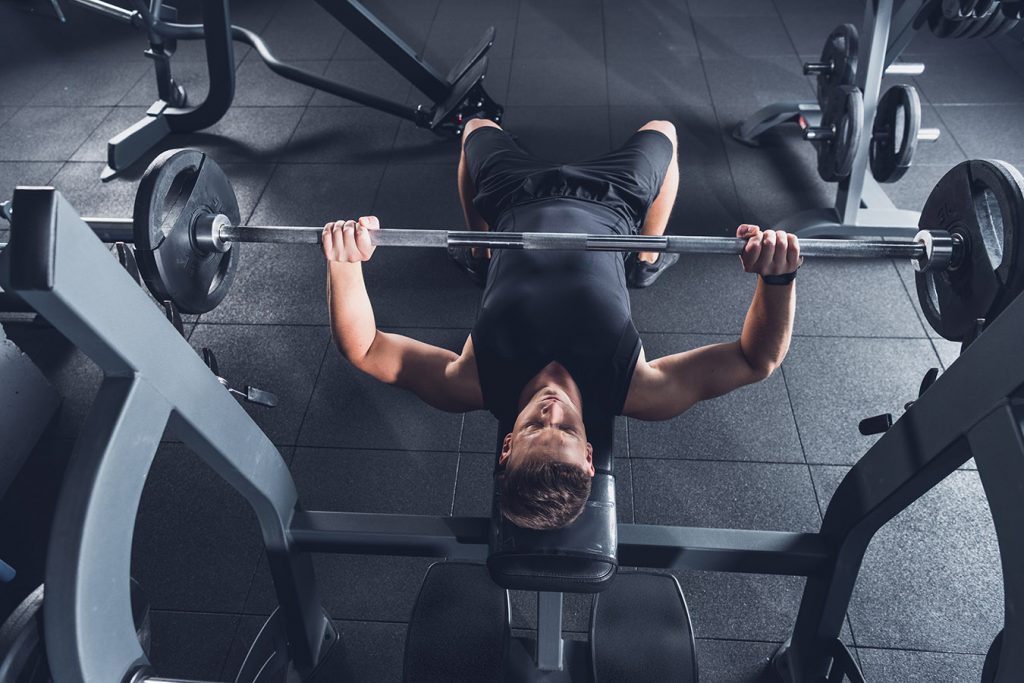Some people constantly yell about periodization of loads, and declare that muscle growth and recovery without periodization is impossible and muscles and ligaments will inevitably be destroyed by multiple injuries!
Other fitness and bodybuilding authorities argue that muscle “failure” is the only effective way to stimulate hormone secretion in our body, so all training should be carried out to failure and periodization with natural training is not needed, since natural athletes are not prone to injury, unlike “chemists”.
There is a fairly widespread myth about the effectiveness of alternating low-rep failure training and high-rep failure training. At first glance, everything is simple and understandable, as we do 5 repetitions per strength for a week, we do “pumping” for 15 repetitions for a week and we grow strong and enduring muscles. Does everything work so well in practice?
If you always work to muscle failure by changing the number of repetitions, such periodization cannot be called effective. Performing sets to failure, overload the ligaments and fatigues the nervous and endocrine systems, regardless of whether you do 5 or 15 reps per set. However, working “to failure” in a multi-rep mode, makes the body even more tired than performing with low-rep sets.
The fact is that with intensive repetition, you will incur much higher energy costs. Periodization is about unloading our body and lowering the intensity of training, so we need to temporarily stop training until failure.
When is Periodization Not Needed?
Failure training without periodization works great for young athletes who have a fairly strong body texture, strong ligaments and tendons and are strong and naturally gifted athletes.
Such “strong men” can work for decades until complete muscle failure, without experiencing pain in their joints and ligaments. Refusal works well with infrequent workouts and a small number of sets. If you try to do 20 sets to failure per muscle group weekly, you are much more likely to over train or get injured.
If you work according to Mike Mentzer’s system, wherein each exercise only one final or final set is performed to failure, then the risk of overloading the body is an order of magnitude lower. If nothing hurts and you feel great, strength indicators are steadily growing (there is a steady increase in strength every week or two) and train to failure.
You do not need periodization yet. Best the enemy of the good. Such a regimen usually works well for athletes with a training experience of 6 months to two to three years of training. They already know how to perform exercises correctly and accurately, but have not yet managed to overload all the systems of their body with failure training.

When is Periodization Necessary?
There are several categories of people who are simply dangerous to constantly work to failure. Firstly, these are the elderly and secondly, they are experienced athletes with large muscle mass and strength. Finally, these are naturally not very strong people, often prone to injury during training.
Another category is athletes who are easily over trained and often get sick, especially after heavy or frequent training. This is not necessarily joint pain, but also common colds, as well as insomnia and other disorders associated with decreased immunity and general fatigue.
Very often, athletes who have worked in failure for several years or even decades, begin to do periodization and have begun to experience periodic or chronic pain in the spine, knees, shoulders, or elbow joints. Periodization options can be many, the number of repetitions in a cycle can change or remain unchanged. Let’s look at an example of a cycle where 100kg on the bench press is 75-80% of your 1RM or 1RPM.
- 1-week training 100 kg for 4 sets of 6 reps
- 2-week training 70 kg for 4 sets of 12 reps
- 3-weeks 80 kg for 4 sets of 10 reps
- 4-weeks 90 kg for 4 x 8 reps
- 5-week training 100 kg for 4 sets of 8 reps
- 6-week training 110 kg for 4 sets of 6 reps
We see that only at 5 and 6 weeks, it is possible to achieve failure in working sets and then this is not necessary. Thus, for the first 4 weeks of the 6-week cycle of periodization of the load in the bench press, the athlete worked without reaching muscle failure and all systems of his body, especially the immune and endocrine systems, received all the opportunities for complete recovery and accumulation of strength before the weeks of peak shock loads.
Also, there is time and opportunity for the healing of accumulative microtraumas, which strengthens the ligaments and joints, restoring them after heavyweights. Unlike a break with the aim of complete rest, there is no “rollback” in muscle mass and strength indicators. From a disciplinary point of view, periodization is preferable to a break, as an athlete can work on improving his technique and does not wean from the regularity of the load and does not become overgrown with fat.
Conclusion
Obviously, both “failure swotting” and periodization are working types of training that may be more or less appropriate for this or that athlete. Therefore, it makes sense to make a choice using the principle of an individual approach for each specific person.





